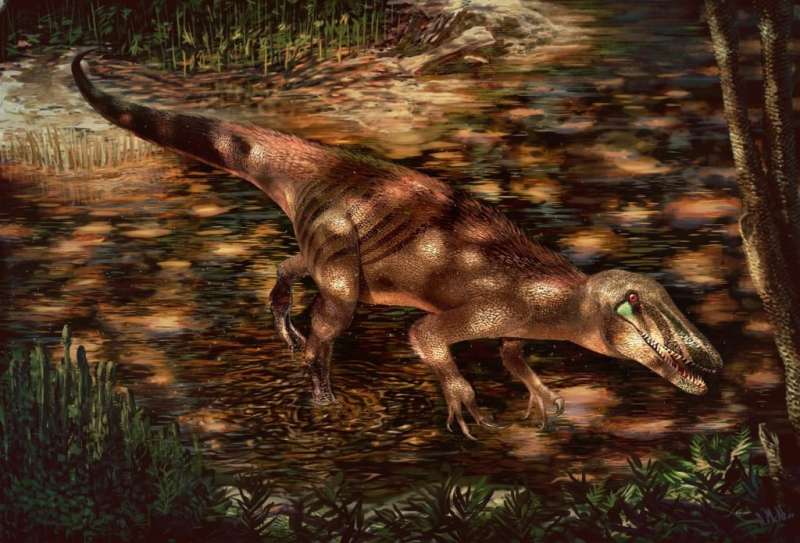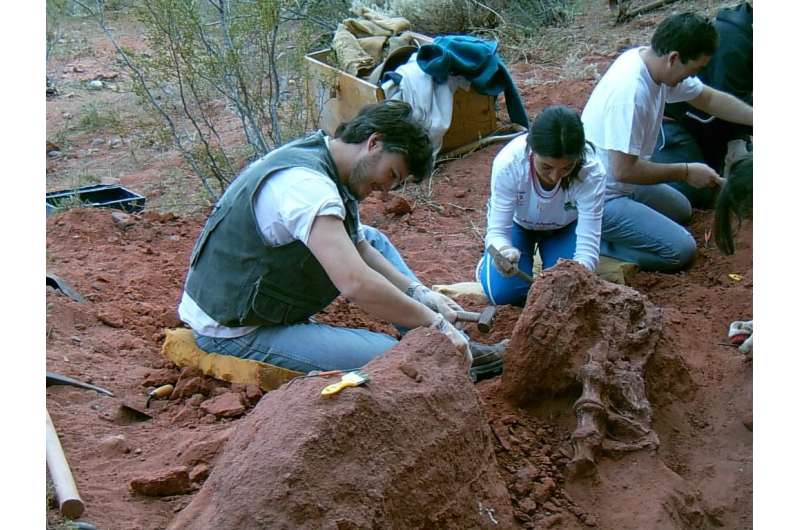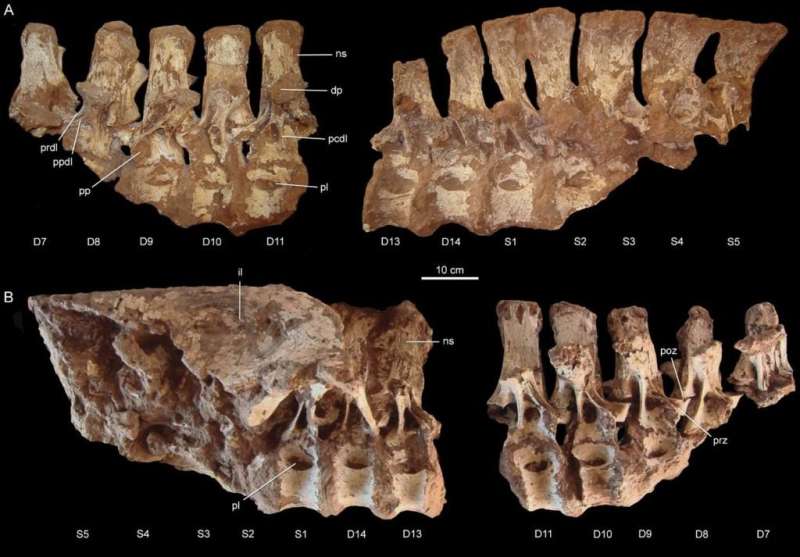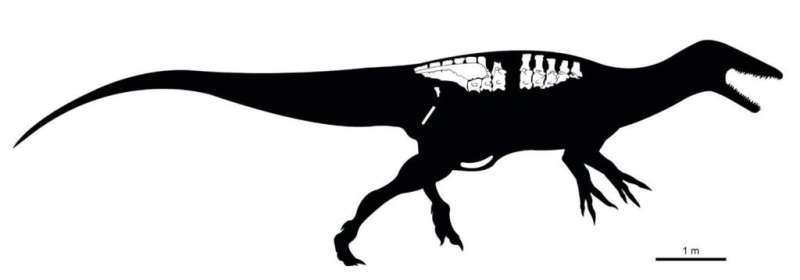New Patagonian predator sheds light on mysterious meat-eating dinosaur group

The new predatory dinosaur Tratayenia rosalesi crosses a stream in what is now Patagonia, Argentina roughly 85 million years ago.
Although many new dinosaur species have been discovered over the past few decades, entire groups of these animals remain shrouded in mystery. One of these is the Megaraptoridae, a shadowy pack of predators that terrorized South America and Australia during the middle and late stages of the Cretaceous Period – the third and final time period of the Age of Dinosaurs. Today, paleontologists announced the discovery of a never-before-seen member of this motley crew that casts light on the skeletal structure of megaraptorids and the roles they played in their long-vanished environments. Named Tratayenia rosalesi, the new species is based on fossil bones collected in Neuquén Province, Argentina – located in the northern part of the wild, windswept region of South America known as Patagonia. A study of the new creature—named after the locality where it was found, Tratayén, and its discoverer, Argentine fossil hunter Diego Rosales—was recently published in the scientific journal Cretaceous Research.
According to study leader Juan Porfiri of the Museo de Ciencias Naturales of the Universidad Nacional del Comahue in Neuquén, "When Diego told us about his find, we quickly got permission from the Dirección Provincial de Patrimonio Cultural del Neuquén to dig up the dinosaur. After we went to the site and began to unearth the bones, we got very excited because we thought we might have a megaraptorid."
Says study co-author Domenica dos Santos, also of the Museo de Ciencias Naturales of the Universidad Nacional del Comahue, "Not many megaraptorid specimens are known, so we thought the new fossil would provide important information on these enigmatic predators." Adds fellow co-author Rubén Juárez Valieri of the Museo Provincial Carlos Ameghino in Cipolletti, Argentina, "Patagonian discoveries such as Tratayenia are expanding our knowledge of the spectacular but still mysterious dinosaurs of the Southern Hemisphere."

Tratayenia is identified from many vertebrae of the back and all vertebrae of the hip, plus ribs and parts of the pelvis. Despite the incompleteness of the skeleton, the bones display unique characteristics that show they belong to a new species. "The vertebrae of Tratayenia are about as gorgeous as dinosaur fossils get, and they've got some pretty weird features to boot. We definitely wish we had more of this thing, but what we do have is awesome," says study co-leader Matt Lamanna of Carnegie Museum of Natural History in Pittsburgh.
Tratayenia is the first member of Megaraptoridae to preserve the complete series of hip vertebrae, and as such, it lends insight into the anatomy of this part of the skeleton in these little-known Cretaceous carnivores. The new creature may also be the geologically youngest megaraptorid yet found anywhere in the world, showing that these predators survived until at least 85 million years ago, approaching the end of the Age of Dinosaurs.
Thanks to discoveries such as Tratayenia, paleontologists are closer than ever to understanding what megaraptorids looked like and how they behaved. These dinosaurs had proportionally long, low skulls lined with many sharp, serrated teeth; bones that were chock-full of air pockets like those of their modern relatives, birds; and most strikingly, long, powerfully muscled forelimbs that were tipped with gigantic talons on the innermost two fingers of each hand. Megaraptorids grew to over nine meters (30 feet) in length and were the biggest, deadliest predators in southern South America from about 95 to 85 million years ago. They used their enormous hand claws to catch and subdue prey, including other dinosaurs. Says Lamanna, "Megaraptorid claws are the stuff of nightmares – razor-sharp meat hooks more than a foot long. Wolverine from the X-Men has nothing on these guys."

Still, scientists have much left to learn about megaraptorids. For one thing, their evolutionary relationships to other meat-eating dinosaurs are poorly understood, with some scientists arguing that megaraptorids are related to even larger Southern Hemisphere carnivores such as Carcharodontosaurus and Giganotosaurus, whereas others contend that megaraptorids are close cousins of T. rex. Though Tratayenia does not help to solve this particular riddle, an answer may well be in sight. According to Porfiri, "Tratayenia is just one of many exciting megaraptorid fossils that have been found in recent years. After these specimens are studied, many questions surrounding these puzzling meat-eaters may finally be answered."

More information: Juan D. Porfiri et al. A new megaraptoran theropod dinosaur from the Upper Cretaceous Bajo de la Carpa Formation of northwestern Patagonia, Cretaceous Research (2018). DOI: 10.1016/j.cretres.2018.03.014
Journal information: Cretaceous Research
Provided by Carnegie Museum of Natural History




















